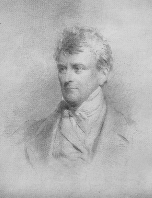Well here we are nearly at the end of another year and my apologises for being away for a couple of months or so. I have not been idling the time away as I have been out and about over the summer, collecting new material for the blog and taking small parties out to visit some of the areas.
 |
| Croick church |
One of the sites that I have been lucky enough to visit is probably one of the most iconic and well known sites associated with the struggles of the highlanders throughout the clearances and that is Croick Church.
On the day of our visit in October, the weather was closing in and the cold swirling mist and rain added to the atmosphere as we drove from Bonar Bridge to the village of Ardgay. From here turn right (or left, depending upon your direction of travel!) and follow onto Church Street. From here you start a journey of around 10 miles to the site of the church, following the river and the many twists and turns as you travel deeper into the strath and the history of time.
 |
| The entrance to the church |
When you finally reach the site of the church you are deep in the recess of the glen and you can't help but feel immersed in the history and troubles of the area as you walk upto the gate of the church.
The church is open throughout the day to visitors, and once you have descended the steps and entered the church, it is worth just stopping for a moment to reflect over the ground upon which you are walking and the families, young and old who would have made the same entrance to the church as you just have, all those years ago as part of one of the most famous and most notable of the clearances, the Glencalvie clearances in 1845.
These particular clearances and events took place in 1845 and were centred around 18 families who were petitioned to be removed on the 12 of May that year. These families, from the Straths of Glencalvie, Amatnatua and Greenyards, also took their plight to the newspapers through their ministers and also approached the factor James Falconer Gillanders who was acting upon the instruction of the absent landlord, Major Charles Robertson of Kindeace.
The plight of those affected by the Clencalvie clearances their struggles and attempts was made all the more prolific and brought to the attention of those outside of Scotland through the attendance of a reporter from The Times Newspaper of London who was able to witness the sight and report it in the newspaper for his readership in 1845 and also through petitioned discussion and text placed in The Scotsman by ministers of the Free Church on behalf of the families involved.
 |
| Plaque at the entrance to the church. |
Due to the attention that these various avenues attracted their was a slight stay granted until the 25th of May so that alternative accommodation could be sought. it is reported that only 6 families did arrange some form of refuge in Bonar Bridge and Edderton with the rest unable to secure anything and it is these families that left their homes at the end of May and sought refuge in the church yard.
It is here that many etched their presence in the windows of the church, and although they sought refuge outside in the yard, the etchings are found within the church itself, suggesting that attendance at some sort of support and worship was still taking place.
 |
| The East window. |
 |
| Transcript of the etchings |
It is not known what became of the families, although their plight served to create much debate around the great injustices taking place in the highlands.
This is a very brief outline of what took place and I will be updating this story and adding other features around this event as I update the blog through the coming winter months.
Further information can be obtained from the official website of the church, along with some photo's showing the inside in greater detail
http://www.croickchurch.com/clearances.htm this can also be accessed
HERE















.JPG)
.JPG)
















